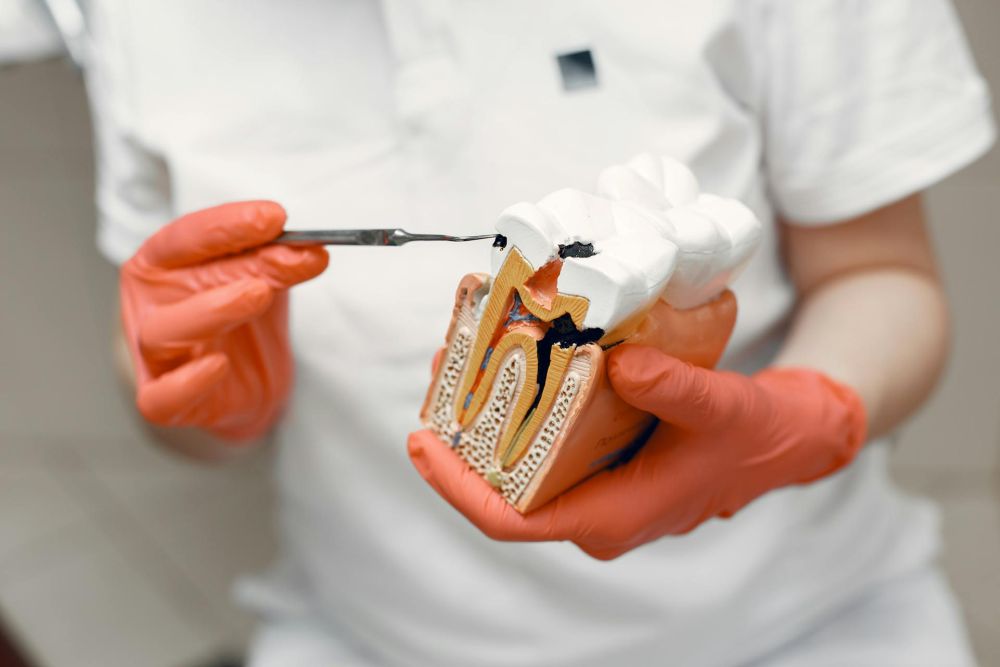 Schematic shows the structure of iron oxide-based “Janus” nanoparticle that can detect, diagnose, and deliver drugs directly to tumors. (Credit: D. Shi/University of Cincinnati.)
Schematic shows the structure of iron oxide-based “Janus” nanoparticle that can detect, diagnose, and deliver drugs directly to tumors. (Credit: D. Shi/University of Cincinnati.)
In the fight against cancer, rust never sleeps.
At least, one might draw that conclusion based on results from researchers around the globe, who are developing complex, iron oxide-based nanoparticles to detect tumors in their early stages, deliver chemotherapy drugs with pinpoint precision, and monitor drug release in real time.
An international research team including scientists at the University of Cincinnati (Ohio), University of Houston (Tex.), Tongji University (Shanghai, China), and Stanford (Calif.) University has developed a new type of nanostructure that can provide cancer cell detection and diagnosis, and deliver drugs, using a double-sided “Janus surface” design.
According to a UC news release, the nanostructure can ”transport detection and biomarker particles to specific sites in the body, then deliver drugs only where they’re needed to minimize side effects.” The nanoparticle has surfaces that are “functionally and chemically distinct…to allow it to carry multiple components in a single assembly and function in an intelligent manner,” the release says.
University of Cincinnati professor of materials science and engineering (and ACerS member) Donglu Shi says in the press release the particles use “existing basic nano systems, such as carbon nanotubes, graphene, iron oxides, silica, quantum dots, and polymeric nanomaterials, in order to create an all-in-one, multidimensional and stable nanocarrier that will provide imaging, cell targeting, drug storage and intelligent, controlled drug release.”
Shi may call the particle constituents basic, but the particles themselves are anything but. According to a paper describing the research, the “super-paramagnetic Janus nanocomposites of polystyrene/Fe3O4@SiO2 were developed using a combined process of miniemulsion and sol–gel reaction… The SJNCs are composed of a polystyrene core and a half silica shell with iron oxide nanoparticles embedded in its matrix.”
The paper explains that this design results in particles with two unique surfaces that can be modified using different functional groups. According to Shi, the approach holds the most promise for diseases such as breast and prostate cancer.
The paper, entitled “Dual Surface-Functionalized Janus Nanocomposites of Polystyrene//Fe3O4@SiO2 for Simultaneous Tumor Cell Targeting and pH-Triggered Drug Release,” was recently published in Advanced Materials (DOI: 10.1002/adma.201301376). Shi also outlined results of the research in a presentation at MS&T’13, held last week in Montreal, Canada.
Halfway around the world, scientists in Australia are on a similar track. According to this news release, researchers at the University of New South Wales and Monash University have developed iron oxide-based nanoparticles that not only deliver cancer drugs directly to cells but provide real-time monitoring of drug release. The treatment is said to represent an important development in theranostics—therapy and diagnostics—an emerging field that uses nanoparticles to diagnose and treat disease.
The Australian researchers synthesized iron oxide nanoparticles with colloidal stability in water and serum “imparted by carefully designed grafted polymer shells. The polymer shells were built with attached aldehyde functionality to enable the reversible attachment of [chemotherapy drug] doxorubicin (DOX) via imine bonds, providing a controlled release mechanism for DOX in acidic environments,” according to the paper “Using Fluorescence Lifetime Imaging Microscopy to Monitor Theranostic Nanoparticle Uptake and Intracellular Doxorubicin Release.” The research was recently published in ACS Nano (DOI: 10.1021/nn404407g) .
The work is said to be the first use of FLIM imaging to monitor drug release inside cancer cells—in this case, lung cancer. “Usually, the drug release is determined using model experiments on the lab bench, but not in the cells,” researcher Cyrille Boyer, associate professor of chemical engineering at UNSW, says in the news release. “This is significant, as it allows us to determine the kinetic movement of drug release in a true biological environment.”
Author
Jim Destfani
CTT Categories
- Biomaterials & Medical
- Nanomaterials


